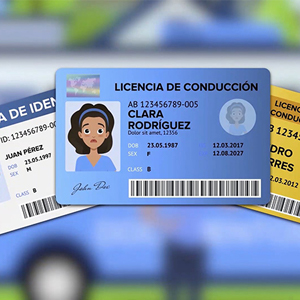In today’s digital era, plastic cards have become ubiquitous in our daily lives. From credit and debit cards, gift cards, loyalty cards, identity cards, access cards, and more, plastic cards are ubiquitous, and we often take them for granted.

But have you ever wondered how these plastic cards are made and printed? In this article, we will explore the different types of plastic cards and the printing technologies used in the plastic card printing process.
Types of Plastic Cards
Let’s start by looking at the different types of plastic cards used in various industries:
1. Credit and Debit Cards
Credit and debit cards are the most common types of plastic cards, used worldwide for financial transactions. These cards are typically made of high-quality polymers and feature personal information of the cardholder, including name, account number, expiration date, and signature.
2. Gift Cards
Gift cards are another well-known type of plastic cards used mostly for retail transactions. These cards are usually pre-loaded with a certain amount of money or credit, which can be used to purchase goods or services from the issuing retailer or merchant.
3. Loyalty Cards
Loyalty cards are used by retailers and businesses to reward and incentivize customers for repeat purchases. These cards typically offer discounts, bonuses, or exclusive deals to cardholders, encouraging customers to return and continue patronizing the business.
4. Identity Cards
Identity cards are used in various industries, including healthcare, education, government, and corporate offices. These cards feature personal information of the cardholder, including name, photo, job title, and company logo, and are used for access control, identification, and verification purposes.
5. Access Cards
Access cards, also known as security cards, are used to grant access to secured areas or buildings. These cards typically feature embedded magnetic stripes, smart chips, or radio-frequency identification (RFID) tags, allowing for secure and convenient access control.
Printing Technologies for Plastic Cards
So, how are these plastic cards made and printed? There are various printing technologies available for printing on plastic cards, including:
1. Thermal Transfer Printing
Thermal transfer printing technology uses heat to transfer ink from a ribbon onto the plastic card surface. The printer uses a thermal printhead to heat a wax or resin ribbon, melting the ink onto the card surface, creating high-quality images and text. This technology is ideal for low-volume card production and offers good durability and resistance to fading and scratching.
2. Dye-Sublimation Printing
Dye-sublimation printing technology uses heat to transfer dye onto the card surface, creating vibrant, full-color images and text. This technology uses a thermal transfer ribbon containing solid dye particles that are transferred onto the card surface under high heat and pressure. This technology is ideal for high-quality photo ID cards, membership cards, and loyalty cards.
3. Inkjet Printing
Inkjet printing technology uses inkjet cartridges to print directly onto the plastic card surface. This technology offers high-quality images and text but is more suitable for low-volume card production due to slower printing speeds. Inkjet printing is ideal for printing personalized plastic cards, such as IDs, membership cards, and gift cards.
4. Laser Printing
Laser printing technology uses a laser beam to transfer toner onto the card surface, creating crisp, high-quality text and images. This technology is ideal for personalizing card information, such as name, account numbers, and photos. Laser printing is typically used in conjunction with other printing technologies for card personalization.
Wrapping Paper Printing Machine
While plastic card printing technologies vary depending on the type of plastic card being produced, the material and printing technologies are similar. However, it's worth noting that printing on plastic cards is different from printing on paper.
Printing on wrapping paper is a common practice, and a wrapping paper printing machine makes things easy. This machine utilizes various printing technologies, including flexographic and rotogravure printing. These technologies are ideal for printing on wrapping paper due to their ability to print large runs efficiently.
In conclusion, plastic card printing is a complex process that requires the use of various printing technologies, depending on the type of card being produced. With the advancements in printing technology, the scope for the production of high-quality plastic cards has increased, making plastic card printing an efficient and convenient process.